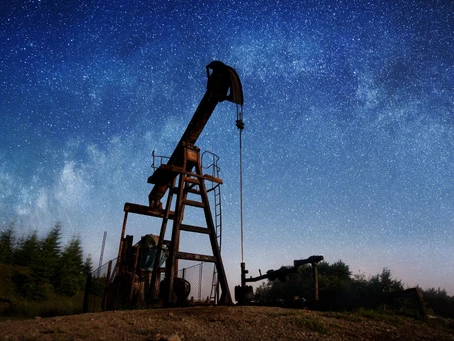The Environmental Footprint of Frac Cranes
Hydraulic fracturing, commonly known as fracking, has significantly advanced natural gas production. Central to this process are frac cranes, which are indispensable for efficient operations. However, the environmental consequences of frac cranes, including emissions, habitat disruption, and water use, need thorough examination. This article delves into these environmental impacts and explores strategies to mitigate them.
Understanding Fracking Operations
Fracking involves injecting a high-pressure fluid mixture into the earth to create fractures in shale rock formations, allowing natural gas or oil to flow out.
Key Steps in the Fracking Process:
- Vertical Drilling: The process begins with drilling vertically to reach deep shale layers.
- Horizontal Drilling: The drill then turns horizontally to extend for miles, accessing gas pockets in the shale.
- High-Pressure Injection: A mix of water, chemicals, and sand is injected at high pressure to fracture the shale.
- Extraction: The gas or oil flows up through the well to the surface.
- Recovery of Tight Oil and Gas: Fracking targets “tight” resources trapped in hard rock formations.
Global Implications of Fracking
Fracking has reshaped energy markets, stimulated economic growth, and influenced global geopolitics. However, it also poses significant environmental and regulatory challenges.
Impact on Energy Markets:
Fracking has unlocked vast reserves of natural gas and oil, leading to increased supply, reduced prices, and enhanced energy security.
Economic Benefits:
Regions rich in shale resources have experienced economic growth, job creation, and infrastructure investment due to fracking.
Geopolitical Shifts:
Fracking has altered global energy dynamics, giving countries with significant shale reserves more leverage and reducing dependence on imported oil.
Environmental Concerns:
Fracking poses risks to air and water quality, increases seismic activity, and contributes to greenhouse gas emissions. The process also consumes large amounts of water and chemicals, leading to pollution and habitat disruption.
Regulatory Challenges:
Governments face difficulties in balancing energy production with environmental protection and public health, resulting in varied regulatory approaches.
Public Opposition:
Environmental and health concerns have led to strong public opposition to fracking, prompting calls for stricter regulations or bans in some regions.
Technological Innovations:
Fracking has driven advancements in drilling technologies, environmental monitoring, and carbon capture and storage (CCS), improving efficiency and reducing environmental impacts.
Worldwide Expansion and Technological Progress
Fracking has expanded globally, including in the Northern Appalachian Basin and the Bakken Shale Formation. Technological advancements in hydraulic fracturing have significantly boosted oil and gas production, contributing to energy independence, economic growth, and innovation.
Technological Contributions:
- Energy Independence: Accessing previously unreachable reserves has reduced reliance on foreign energy sources.
- Economic Growth: Fracking has boosted local economies, created jobs, and attracted investment.
- Technological Innovation: Advances in drilling technologies, materials science, and environmental monitoring have enhanced the efficiency and safety of oil and gas operations.
- Environmental Monitoring and Regulation: Advanced technologies ensure compliance with safety and environmental standards.
- Carbon Capture and Storage (CCS): CCS technologies capture CO2 emissions from natural gas combustion, further reducing environmental impacts.
Sustainable Solutions for Frac Crane Operations
To address the environmental impact of frac cranes, the industry is adopting sustainable practices:
Electric Cranes:
Electric cranes reduce carbon emissions and air pollution by using renewable energy sources such as solar or wind. They also operate more quietly, minimizing noise pollution.
Hybrid Cranes:
Hybrid cranes use both electric and diesel power, optimizing energy use and reducing environmental impact by switching between power sources as needed.
Bi-fuel Cranes:
Bi-fuel cranes run on diesel and cleaner fuels like natural gas or biodiesel, reducing harmful emissions and offering flexibility in operations.
Smart Crane Management Systems:
Advanced technology and data analytics optimize crane operations for efficiency and environmental performance.
Renewable Energy Integration:
Integrating renewable energy sources like solar panels or wind turbines at frac sites reduces reliance on fossil fuels and lowers operating costs.
Emissions Reduction Technologies:
Retrofitting diesel-powered cranes with emissions reduction technologies such as catalytic reduction systems and particulate filters can significantly reduce emissions.
Conclusion: Balancing Development and Environmental Responsibility
Frac cranes play a critical role in fracking operations, but their environmental impact must be managed carefully. By adopting sustainable practices and prioritizing green solutions, the industry can minimize its ecological footprint while maintaining efficiency. Stakeholders should focus on innovative technologies and stringent environmental monitoring to balance industrial development with environmental stewardship.
For more insights on sustainable industrial practices and innovative solutions, visit the SMCLR, A Crane Co. blog. Learn how crane rental and truck transportation services can be optimized for both efficiency and environmental sustainability.


Leave a Comment